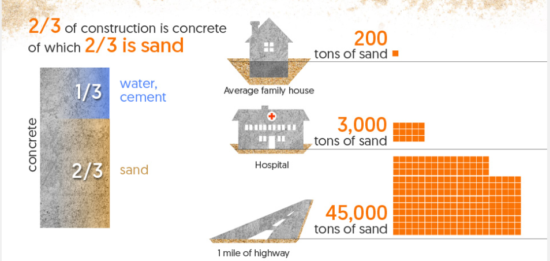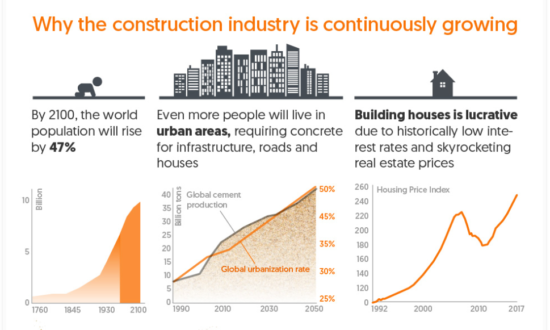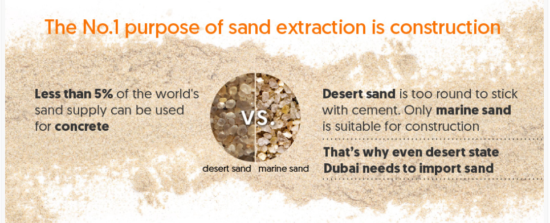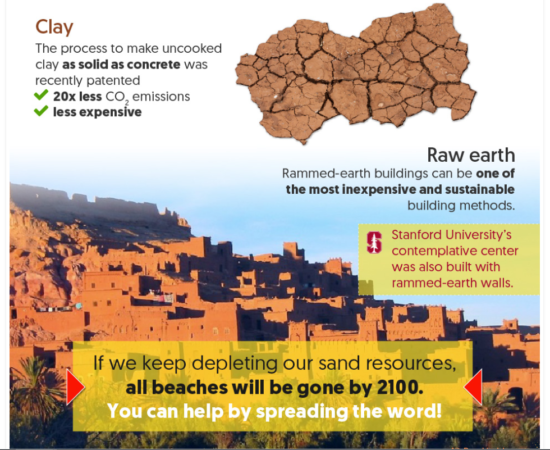How does sand scarcity affect housing and the construction industry? When thinking about building a new house, building, or even city infrastructure, most people don’t realise that sand is actually a fundamental element of construction. Why? Because sand is a key ingredient in creating concrete. Due to continuously growing population and the increasing urbanization rate, the need for concrete and other cheap, quick-to-produce building materials is increasing. As a result, sand is becoming more scarce and our beaches are disappearing at an alarming rate. Research suggests that 75-90% of the beaches are already retreating worldwide.

The first, main reason why the construction industry is so influenced by sand scarcity is that every mile of road and every building requires an astonishing amount of sand. It is used for the sub-bases and foundations of structures, as well as making up two-thirds of concrete (with the other third being mostly cement and water). To give an idea just how much sand we are using: just 1 mile of highway requires 45,000 tons of sand. An average-sized family house, requires approximately 200 tons of sand.

The other reason is to do with the variety of sand. Although there is much more sand accessible in the desert, the grains of desert sand have become smooth and round over time through the natural erosion process. Unfortunately, this makes it inadequate for both sub-base building and concrete. For a structure to become stable, marine sand is required because it has a more angular structure.

So to be exact, the world is not running out of sand, it is running out of accessible marine sand that can be used for construction and buildings. Our beaches, coastlines and riverbanks are the main source of construction sand, and this resource is not renewing as fast as we are using it.

So how do we combat this rising issue? Obviously there will still be a ever-growing need for construction materials to build cities, infrastructure, and housing. For housing at least, the focus should now move to renewable, sustainable construction resources such as wood or bamboo. Other opportunities for ‘green’ or alternative building include recycling or reusing concrete, plastics, containers and other waste substances.

In terms of materials that actually provide a similar look and feel to concrete, there is the option of ‘rammed earth’ – a building technology that has been around for quite some time, which compacts natural raw materials such as dirt, chalk, lime, or gravel.

A modern application of this building style can be seen in Stanford University’s Windhover Contemplative Center for students. Opened in 2014, the building is a place of quiet reflection for students, and was designed to be a peaceful sanctuary that fit in with the natural landscape. Windhover was built with an emphasis on ‘green’ construction practices. Apart from using rammed earth walls instead of concrete, the building also uses other sustainable architecture features such as skylights, to make use of natural light and reduce energy consumption in the building.
For more ecological sustainability, and to prevent our sand and beaches from disappearing, it is crucial to invest more interest, time and money into using sustainable products within the construction and housing industries. For more information on sand scarcity, including sources, please see further information at trademachines.com/info/sand.





Be the first to comment